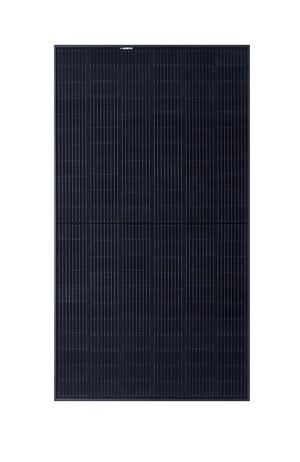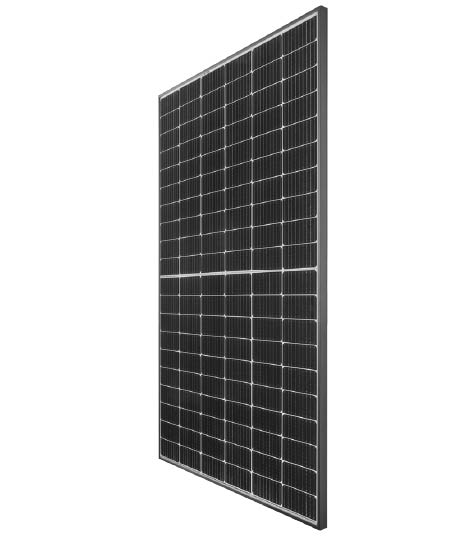REC Solar Panels a quality solution for the Sunshine Coast
SolarWide's Commitment to Quality and Reliability
The Sunshine Coast presents unique challenges for solar systems due to its high heat, humidity, and proximity to the beach. These conditions can take a toll on solar panels and inverters, especially considering the area’s high salt levels and strong winds.
At SolarWide, we understand the importance of quality in such demanding environments. That’s why we exclusively offer top-tier products, avoiding the mid-range options altogether. By sticking to the quality end of the market, we’ve built a solid reputation for reliability, ensuring our customers experience fewer issues with their solar systems.
REC SOLAR PANELS
At SolarWide we offer REC Solar Panels
SolarWide is offering the REC Alpha Pure and REC Twin Peak series of solar panels. These durable and long lasting panels are made in Singapore and have a strong 25 year product warranty. They have ben distributed in Australia since 2009 with excellent results and very low warranty returns.
SolarWide has been your local Sunshine Coast REC Certified Solar Professional since 2013. Being appointed by REC to this prestigious position means not only is the REC solar panel of high quality, but that the qualified solar partner installing it is also highly skilled and has been trained by REC. This gives end customers great peace of mind for the quality of the final solar installation.
Not every installer can call themselves a “REC Certified Solar Professional”. This appointment of SolarWide means we have been recognised by REC as best-in-class service and reliability for the Sunshine Coast region.
By choosing SolarWide a REC Certified Solar Professional for your installation, you can benefit from REC’s unique REC ProTrust Warranty package at no extra cost. The REC ProTrust Warranty gives you an extra 5 years product warranty cover (25 years total) and up to 25-year labor cover* in addition to REC’s 25-year performance warranty.
*Subject to conditions. See the REC website for more details

We use quality solar equipment due to corrosive nature of our neighborhood
Why REC panels
The REC Alpha Pure series are known as a the absolute best Premium Solar Panel with superior performance even in high heat. This REC panel model features an innovative design with high panel efficiency and power output, enabling customers to get the most out of the roof space used for the installation.
Combined with industry-leading product quality and the reliability of a strong and established brand, REC Alpha Pure panels are ideal for residential and commercial rooftops in a coastal environment.
REC'S fully automated production
Founded in 1996, REC Group is an international solar energy company dedicated to building long-lasting affordable solar power panels. REC is committed to manufacturing high-quality solar panels with innovative technology. Its products won the 2020 InterSolar Award in Germany.
A quality solar panel like the REC Alpha Pure or Twin Peak 4 series also requires a quality installation and quality components to maximise system performance, ensuring solid long term financial savings.
SolarWide installers ensure we follow the manufacturer’s installation guidelines and we make sure our inverter and racking choices match the REC top panel quality.
REC Panels we offer


REC ALPHA PURE-R SERIES - 410W
The REC Alpha Pure-R hits the sweet spot in terms of power, size, and weight. Built on a lead-free, RoHS compliant platform with high-performance heterojunction cells and solder-free connections for more durability, the REC Alpha Pure-R comes with a gapless cell layout keeping it compact and achieving a phenomenal power density.
The innovative gapless cell layout ensures even better performance under partial shade, e.g., from trees or chimneys, and with its full black appearance, the REC Alpha Pure-R is an elegant solution for all home rooftops and customers wanting to all they can for the environment.


REC TWINPEAK 5 SERIES 400W
The REC TwinPeak 5 Black is the full-black variant of REC’s fifth generation of its multiple award-winning TwinPeak Series and is the most powerful yet! Improving on the strengths that have made previous generations so successful, the REC TwinPeak 5 Black improves panel power to 410 Wp for even more energy generations and higher savings on electricity bills and carbon emissions, all while offering you an aesthetically-pleasing elegant black look for your rooftop.
Using REC’s iconic and patented Twin Design, the REC TwinPeak 5 Black gives you higher energy yields, even under shaded conditions, and its super-strong frame design can withstand loads up to 7000 Pa. It is also eligible for the extended REC ProTrust Warranty for 25 years coverage on product, power and labor, guaranteeing a leading output of at least 92% at 25 years and ensuring unbeatable all-round coverage.

REC TWINPEAK 4 SERIES 370W
REC TwinPeak 4 Series panels are ideal for residential and commercial rooftops. The REC TwinPeak 4 panels come with a full 25-year product and performance warranty and are made in Singapore.

REC Solar Panels
FAQ's
Do solar panels perform better in hot weather?
In hot weather, many people will turn on their air conditioners, increasing demand for electricity. While it is natural to believe that bright sunlight would improve the performance of solar panels, allowing them to generate more power, this is not always the case.
Although Australia is a location that regularly receives very hot days especially in summer, this doesn’t mean your solar system will not operate at all. A 38°C degree day, can see temperatures of the panel on the roof reach 80 or even 90°C. This then means that you may produce 30 kilowatt hours per day rather than 40 kilowatt hours per day, which would have been possible at a 25°C day.
For this reason the temperature coefficient is important. It measures the panel’s loss of performance for every degree over 25°C.
Purchasing quality panels with high coefficient ratings means in hot weather when one needs solid solar system output to support for example air conditioning use, the quality panels will still perform well and create solid savings for you.
What is pmax and temperature coefficient?
When solar panels are tested for maximum power output, they are subjected to a 25°C industry standard temperature. When the temperature rises above 25°C, solar panels begin to produce less power. The term “temperature coefficient” measures the percentage of power output wasted by a particular solar panel as the temperature rises above 25°C. To calculate this number, we divide the percentage of power lost at a specific degree measurement above the industry standard by the number of degrees above 25°C.
What is the history of panel and panel wattage development?
Over the following decades, the principle was observed over and over, but no one knew what to do with it, given also that electricity and its use was not widely discovered. Then nearly 50 years later in 1883 Charles Fritts, an American Inventor who decided to harness the principle and to develop the 1st working solar cell. While cells in residential panels nowadays can reach as much as 20% efficiency, the very early solar cells had an efficiency of less than 1%. Also, the need for gold to be involved in their production meant that they were commercially not viable.
The more practical use of solar cells began in the 1940s when Russell Ohl, an American engineer who is recognized for taking out the initial patent on a light-sensitive device – also known as the modern Solar Cell. In those days and up to the 1960s the efficiency of the cell had reached around 5%.
In 1954 commercial manufacturers such as Bell Labs had moved into solar creating silicon solar cells with a world record efficiency of 6%. A solar-powered satellite developed by Vanguard followed in 1958. Further research into solar was funded as part of the space race of the US and USSR in the 1960s.
The Soyuz 1 capsule had the 1st manned spacecraft powered with solar cells, followed by Skylab in 1973, which had solar panels as their main power generating source.
Solar became familiar to the masses in the late 1970s and 1980s via solar-powered calculators and late phone chargers.
From the 1980s solar power cell development continued exceptionally so that in the mid-1990s average locally Australian produced solar panels had an 80W capacity. By 2006, the panels had reached a staggering 165 Watts. IN 2009 the average panel in Australia had reached 175W, dominated by Suntech and Sharp as the 2 key local suppliers.
Then in 2010 came to the development of a larger footprint panel of approx 1.60m to 1mwide footprint and a weight of 20 -22kg. REC for a while held the local record with a 235W model.
Then in 2011 many new manufacturers entered the market, most of them focusing on a 250W model. It made it easy to sell a 2, 3 or 4 kW system. After a period of relative stability, cell research in 2013 saw the key local panels reach from 260 to 275W.
By 2014 some manufacturers had pushed the wattage to 300W and 2 years of relatively stable wattage of 300 to 320W followed up to 2017.
In 2018 some solar panel leaders started to release 335W models followed by 340 to 350W in 2019. The improvement in output was a combination of increased cell efficiency technology, the treatment of the surface glass to gain more light absorption and the increase of cell size and subsequently also the panel size.
While 5 years ago many panels were 1.60 to.1.64m high and 1m wide, many panels are now 1750 mm to 1950 mm high and 1005 to 1100 mm wide. Therefore the wattage nowadays is reaching 370w and even over 400W for residential panels. Nevertheless, since the 330W range, the wattage increases are mainly due to increases in panel sizes. This has made installing panels a little more challenging for the installer community as the weight of these larger panels has increased. They can be also more challenging to fit on a smaller roof.
It is expected that in future years solar panels above 450W for residential solar will be released but we do expect that the race to higher wattage will start to slow as the panels can’t get much bigger or they will be too hard to fit on a roof and handle.
Why pay more for quality solar panels?
At SolarWide, we have never used products at the cheap end of the market as we always intended to be around for a long period of time, and we are proud now to be already a 2nd generation solar company.
Ten years after we opened our doors we’re still here and growing. So, what have we been doing different, to the over 40 Sunshine Coast solar businesses that have come and gone?
In the early days, we offered panels in the mid-range, to a mixed result. Today we focus purely on providing premium solar options to our customers, as that’s the only system quality, which we have seen stand the test of time.
We’ve tried a few different solar panel brands over the years to bring the price down, but we have experienced and seen too many issues.
We regularly see solar panels on the Sunshine Coast from solar panel manufacturers such as Jinko Solar, Canadian Solar, JA, Trina Solar & more recently Longi, and Seraphimat budget prices with very long warranties. It seems no one is asking the question, how can these warranties be financed, when the profit margin is so slim.
At SolarWide, we prefer to keep to have a low number of repair call outs and for this reason, will only sell reliable panels and inverters. For this reason, we nowadays only offer quality solar panels, from reputable brands such as REC.
Many electrical and solar companies offer lower-cost brands, but they’re mass-produced, and the biggest issue that we’ve found in this market is that quality control steps and corners get cut to bring expenses down.
Rather than being consistently and built to last, unfortunately, many panels are now made to a price. As we get older and wiser, we’ve learnt the hard way as we have also used some of these brands in the early days, but we’ve since found that this was not such a great idea.
When you try to compete in the low-end and mid-range of the market, you inevitably get an ever-growing number of failures and issues. We have previously used panels from well-respected volume producers and seen a greater than 50% failure rate.
But today, we understand that a range of problems can arise with solar systems, so quality control in the factory is crucial.
We don’t want to be worried about system failures, and we know that our customers don’t want to be concerned about it either so we feel it is best only to offer products that we know will last the test of time, and you will be looked after if there is an issue.
As a solar panel specialist on the Sunshine Coast, we have seen many solar brands come and go. They arrive in Australia with a huge marketing presence and are what we call the ‘flavour of the month’ but when the problems arise 1 or 2 years later, they cut and run.
It is amazing to think that in the past 10 years over 400 solar panel manufacturers have followed this path. When we started SolarWide in February 2011, solar panels were expensive. Today, there are panels available for about ten times less than what good panels were back then.
The industry has grown, and the production costs have been reduced, but that is still a significant price difference to comprehend.
Unfortunately, many companies produce solar panels to meet a manufacturing price point, rather than creating them to last and exceed the warranty’s length.
We would love to remain’ positive, but unfortunately, a manufacturer making panels at such a low cost is likely to experience quality issues and severe faults. They are increasingly placing their customer in a challenging position. The customer may have to fork out more money to fix or replace the panel issue, and will waste a lot of time chasing non-existent “paper warranties”.
What is the solar module efficiency?
The higher the efficiency rating, the more output will be generated per panel and therefore the fewer panels one will need to build a solar power system that meets your energy needs.
It is however worth mentioning that solar panel efficiency isn’t all that important for a standard residential solar system as we are talking about such a small number of solar panels. It does become more important with larger commercial solar systems where you have hundreds or even thousands of solar panels.
One thing that we have noticed is that some cheaper manufacturers unfortunately try to look better by having a higher efficiency rating. They do this by reducing the gap between the edge of the solar cell and frame.
If for example you have solar cells capable of producing 370w of power in a solar panel frame that is 1.75sqm in size and you had another panel with the same cells but in a frame that was only 1.70sqm the latter one would be shown to have higher efficiency and an uneducated solar power buyer might assume that it is better.
However, when you look at the two panels that are both using the same cells, the one with the smaller frame would have the cells much closer to the edge of the frame. This looks good on a solar panel datasheet as the efficiency is higher, but in the real world, the dirt will collect against the edge of the frame and eventually will shade the one with the cells near the edge much sooner than the one with the larger frame as the cells are further away from the edge, therefore, the one with the lower efficiency but built properly with good gaps around the edge will work better than the one that is shown to have higher efficiency.
















